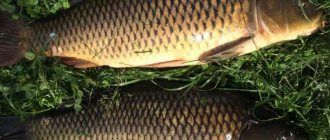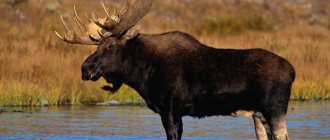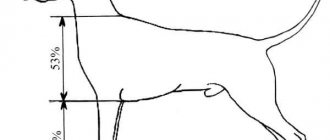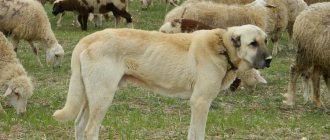- Wild animals
- >>
- Fish
Bream is a coveted trophy for all fishermen; it occupies an honorable place in both sport and commercial catches. The fairly large size of individual specimens and the ability to catch bream all year round make fishing even more exciting. If in the central part of the country this type of fish is called bream, then in the southern regions of Russia they are known as kelyaki or chebak. Bream meat is distinguished by its softness, delicate taste, large amount of fatty acids and occupies its rightful place in cooking.
Origin of the species and description
Photo: Bream
Bream is a monotopic species, the only representative of a unique genus of bream from the large cyprinid family. Bream is a ray-finned fish, the ancient fossils of which belong to the third period of the Paleozoic, which is about four 400 million years ago.
Video: Bream
Despite the uniqueness of the genus, ichthyologists attribute 16 species of fish to it, but only three species groups have survived to this day:
- common bream;
- Danube;
- Oriental.
They all differ from each other only in their sizes. Despite the fact that bream is the desired prey of all fishermen, many of them mistakenly mistake young bream for a separate species of fish and even give it a name - bream. This happens due to the fact that young animals have a slightly different appearance than adults. In ichthyology, there is no such term as white bream. Quite often, inexperienced fishermen confuse young bream with silver bream, which also belongs to the carp family and has only minor external differences from the white bream.
Interesting fact: Some people believe that bream is very bony and has dry meat, but this only applies to young animals, and the meat of adults is considered almost as fatty as beluga and can contain up to 9 percent healthy fat.
Appearance and features
Photo: What bream looks like
All three species groups of bream have a rather rounded body, strongly compressed on the sides, the main feature of which is that its height is equal to a third of its length. The scales are moderate in size in the middle of the body and smaller in the area of the head and tail. There are no scales between the ventral and anal fins, as well as on the midline of the anterior part of the back. The dorsal fin is high, but short without a spine, located above the space between the anal and ventral fins. The anal fin consists of a large number of rays, which are never less than twelve.
Adult common bream have a gray or brown back, golden brown sides, and a yellow belly. The fins are all gray with a dark border. The bream has a small head; its mouth is a small tube that can extend. In adult individuals, pharyngeal teeth are formed in one row of 5 pieces on each side of the mouth. A ten-year-old bream has an average length of 70–80 cm, while reaching a weight of 5–6 kg.
Juveniles differ significantly from mature ones:
- they have a smaller body size;
- lighter silver color;
- their body is more elongated.
Some species of bream can have a completely black color, for example the black Amur bream, which has a limited habitat - the Amur River basin. This is a very rare species and its life is poorly studied.
Interesting fact: It is very easy to distinguish the white bream from the white bream by the color of its fins - young bream have gray fins, while the white bream have red ones.
How to prepare?
Bream is distinguished by scales that fit tightly to the body and a sharp dorsal fin, which must be removed to avoid injury when cleaning the carcass. In addition, before preparing any dish, it is recommended to marinate the meat so that its taste is more juicy and rich.
How to clean scales at home?
To speed up the process of cleaning the carcass, you need to do it correctly. Before starting the procedure, the bream must be thoroughly rinsed under running water to remove the top layer of mucus, which will cause the fish to slip out of your hands.
To easily clean bream, you need to dip it in hot water for 15-20 seconds. After this, the scales separate from the body much faster. A T-shirt bag will also help make the procedure easier; it will contain scales flying out to the sides, so as not to stain the entire work surface. In addition, you can clean the carcass directly in the sink or deep bowl.
First you need to cut out the dorsal fin, making cuts on both sides of it. Then you need to lay the bream on its side, take it by the tail and, using the rounded blade of a knife or the back of a spoon, begin to remove the scales with longitudinal movements away from you. You should move from the tail to the head, but not back. A spoon should be used by people who are afraid of damaging the surface of the fish with a sharp blade.
It is better to wrap the tail with a paper napkin or towel so that it does not slip out of your hands during cleaning.
How to cut?
To fry a small bream, simply gut the carcass. But if the individual is large, then it should be cut into portions and the fins removed.
To gut a bream, place it on a cutting board and make a deep cut on the belly, starting from the anus and ending at the base of the head. Then, using a knife, hands or spoon, remove the insides, and then thoroughly wash the abdominal cavity.
The fins can be cut with a knife or scissors, but it is better to cut them with the base so that there are no hard pieces left after cooking.
To fry fish cutlets, you need to make minced meat from meat, but for this you need to fillet the carcass.
How to properly fillet bream can be seen in the video below.
How to separate bones?
After the fillet has been separated from the backbone, you need to place the pieces skin side down and use tweezers to pull out all the bones from the meat. If the fillet was cut correctly, most of the bones and ribs will remain on the backbone, and only small pieces will need to be removed from the flesh.
If it is too difficult to get all the bones, you can cook the bream in such a way that you cannot feel the bones. To do this, deep diagonal cuts (4-6 pieces) must be made on the side surfaces of both sides of the fish. Thanks to this, the meat will be baked or fried, and the small bones will become soft and almost imperceptible to the taste.
How to marinate?
Before you start preparing the dish, the bream needs to be prepared, namely, marinated. At home, you can make a special marinade for frying, smoking, baking and steaming fish.
You can use a dry marinade before frying, baking or steaming. To do this, thoroughly rub the cleaned carcass (whole or pieces) with coarse salt and pepper. And then the fish is sent to a deep bowl, sprinkled with the juice of ripe (dark yellow peel) lemon and mixed. After this, the container should be covered with cling film or a plate and refrigerated for 20 minutes.
Preparing bream for cold smoking is as follows:
- clean the carcass from giblets, wash, dry (if the head remains, then cut out the gills);
- make a deep cut along the entire back (almost to the ridge);
- pour salt into the abdominal cavity and the incision made on the back, and also rub the sides against the scales;
- Wrap the carcass in a plastic bag and put it in the refrigerator for 4-6 hours.
For 1 kg of fish you need to use
about 2 tbsp. l. salt (the amount can be adjusted to taste).
You can marinate bream for hot smoking in a mixture of salt, paprika, black pepper and fish seasoning. With this mixture, thoroughly rub the carcasses, cleaned of entrails and scales (inside the abdominal cavity too), and then leave the fish to marinate for 2-3 hours. If the bream are lying in the open air, then you need to cover them with a cloth or bag to prevent flies from landing.
Where does bream live?
Photo: Bream in Russia
This type of fish lives in large numbers in rivers, lakes, and reservoirs with a sandy or muddy bottom. Their natural habitat covers the basins of the Black, Caspian, Azov, Baltic, Aral, Barents and White seas.
At the mouths of large, full-flowing rivers that flow into these seas, a semi-anadromous form of bream lives, entering the river waters to spawn. It is not found in high mountain rivers and lakes of the Caucasus, as well as in the southern CIS countries. Bream is a common fish for Northern and Central Europe, Northern Asia, and North America.
Bream prefers to be in reservoirs where there is a weak current or no current at all. It is more often found in creeks and deep holes. Adult individuals rarely come close to the shores, staying at a considerable distance from the coastline. Young ones prefer coastal waters, where they hide in coastal thickets. Bream overwinter in deep holes, and some species emerge from rivers into the sea.
Interesting fact: Bream fishing is possible throughout the year, with the exception of the spawning season. It is caught in open water during the warm season and from ice in the winter months. Zhor begins in early June and lasts until mid-summer, and then resumes again by September. During periods of famine, bream bites at any time of the day.
Now you know where the bream fish is found. Let's see what he eats.
What does bream eat?
Photo: Bream fish
Bream can feed directly from the bottom of the reservoir due to the special structure of its mouth. Adults literally explode the muddy or sandy bottom in search of food, and in a short period of time huge schools of bream are capable of completely clearing large areas of the bottom space. The movement of bream during feeding produces a large number of air bubbles rising to the surface from the bottom.
Since this fish has weak pharyngeal teeth, its usual diet consists of shells, algae, small bottom invertebrates, bloodworms, snails and larvae of other fish species. During feeding, the bream absorbs water along with food, which is then retained with the help of special outgrowths. The unique feeding mechanism allowed this representative of the carp family to become the dominant species in its natural habitat and significantly displace the silver bream, roach and a number of other species of river fish.
In winter, especially in its second half, bream is inactive, feeds rarely and sparingly. This is primarily due to a lack of oxygen and low water temperatures, as well as the accumulation of various gases under the ice, which then partially dissolve in the water.
Interesting fact: Adult bream that have lived 10-15 years can gain weight of more than 8 kg with a body length of about 75 centimeters. In warm waters, growth rates are much higher than in cold waters. It has been noticed that individuals living in rivers do not gain much weight.
Features of character and lifestyle
Photo: Bream in the water
Bream is a social fish that gathers in huge groups. At the head of the herd there are always large adults who coordinate movements. In the warm season, schools of fish are located in places with weak currents or standing water and feed almost constantly. Since bream is a very timid and cautious creature, during daylight hours it is at depth, but at night a large number of individuals go ashore to search for food, and this is the time that is considered the best for fishing
They spend deep autumn and winter in “wintering” pits and as soon as the ice begins to melt, the bream goes to its feeding areas. Breams always occupy their wintering places in an organized manner. All large specimens settle in the deepest places, smaller specimens are located higher, and at the same time the fish seem to be calibrated in size.
Ichthyologists believe that the special organization of wintering was not chosen by chance. With this placement order, metabolic processes in the fish’s body are less intense than during wintering alone, which means that strength and energy are saved.
It has been noted that sedentary forms of bream, which never migrate to other bodies of water for spawning or feeding, can live up to 30 years. The semi-through form has a life cycle that is half as long.
Social structure and reproduction
Photo: Bream in the water
Depending on climate conditions, bream become sexually mature at different times. In warm areas at the age of 3-5 years, in cold waters puberty occurs at 6-9 years. The climate also affects the start time of spawning: in the central part of the country, bream spawning begins in early May, sometimes in June, in the south in April, in the north only in July.
With the onset of an important period, the males change their color to a darker one, and specific tubercles appear on their heads, resembling small warts. A school of bream is divided into separate groups according to age. The whole flock does not leave for spawning at once, but in groups one after another. Each of them spawns from 3 to 5 days, depending on weather vagaries. Shallow water areas with plenty of vegetation are selected for spawning grounds. It is easy to recognize spawning bream - their flat, massive backs periodically appear on the surface of the water. Regardless of the bream’s habitat and weather, spawning lasts at least a month.
One adult is capable of laying up to 150 thousand eggs at a time. The female attaches strips with yellow eggs to algae, and those that cannot be attached float to the surface and are eaten by fish. After 6-8 days the larvae appear, and after a month the fry appear. If the temperature drops below 10 degrees, then mass death of eggs may occur.
At first, the fry swim together with the young of other fish species, and at the end of summer or autumn they gather in large schools. They are constantly in search of food and within a couple of months they grow up to ten centimeters in length. They will remain in the spawning areas until spring, and the adults, after completing the important process, go to the depths and, having recovered from illness, begin to feed again.
Cooking methods
Bream is a fish with tasty and tender meat, which does not lose its taste after heat treatment. It is baked, stewed, fried on a grill and in a frying pan, dried, smoked and steamed, as well as salted and dried.
How to bake in the oven?
White bream can be baked whole in the oven, but large specimens should be cut into pieces first, otherwise the meat will not bake evenly.
Fish must be baked at a temperature of 180-200 degrees.
How long does it take to cook bream? Depending on the size of the carcass, baking time varies from 25 to 35 minutes.
Pieces
You can bake bream by cutting the cleaned carcass into pieces or directly the fillet removed from the bone.
Cooking steps:
- remove the head, base of the tail, and internal organs from the fish;
- cut the carcass into approximately equal portion pieces;
- marinate for 15 minutes in spices (to taste);
- grease a baking sheet with sunflower or butter, lay out chopped vegetables, add spices, and put fish on top;
- pour cream;
- Place in an oven preheated to 180 degrees for 30 minutes.
If the bream is large, then a diagonal cut can be made on each piece so that the small bones bake and become soft.
Entirely
The carcass can be baked with the head, fins and tail, but the gills must be removed.
To prepare the dish you need:
- remove the scales of the bream, gut the abdominal cavity, cut off the head and cut off the fins, including the tail;
- make several diagonal cuts on the belly of the fish;
- rub the carcass with coarse salt and hot pepper, coat with mayonnaise or sour cream and leave in the refrigerator for 30 minutes;
- stuff the belly of the bream with onion rings mixed with mayonnaise and spices;
- Grease a baking sheet with vegetable oil, place the fish;
- put in the oven for 15 minutes at 200 degrees;
- take out a baking sheet, sprinkle the carcass with herbs, and cook for another 5-10 minutes.
Before serving, it is recommended to cut the bream into pieces.
How to fry in a frying pan?
To prepare fried fish, it is better to use large fish, as they have fewer bones and the meat is more juicy. To ensure that there are no bones after cooking, you can fillet the carcass and meticulously remove all the bones with tweezers, or cut the bream into thin pieces 1-2 cm thick (then the bones will become soft under the influence of high temperature).
Fry thin pieces of bream in a well-heated frying pan with vegetable oil for no more than 2-3 minutes on each side. It is not advisable to remove the skin, and flour or crackers should be used for breading.
Before cooking, the pieces must be marinated for 15-20 in spices and lemon juice.
How to stew in a slow cooker?
For stewing, it is better to use large carcasses with a lot of meat on the bones.
Cooking steps:
- clean the bream from scales, giblets, remove the head and all fins;
- cut the fish into 2-4 cm pieces, rub with spices and sprinkle with lemon juice;
- Pour vegetable oil into the multicooker bowl, add chopped carrots and onions, add a little mayonnaise and spices, stir;
- place the fish in the vegetables so that some of them are on the surface of the pieces;
- Set the “Quenching” mode for 2 hours.
There is no need to stir the dish during cooking. Immediately after the end of the program, the fish can be served.
How to cook in the microwave?
You need to use bream weighing no more than 1.5 kg, otherwise the meat will not cook. It is advisable to bake fish in a sleeve at a microwave oven power of 900 kW.
To do this you should:
- clean the carcass from scales, remove irregularities, cut off the head, tail and cut out the fins;
- cut the fish into approximately equal pieces less than 3 cm in thickness;
- place in a glass container, sprinkle with pepper, your favorite spices and sprinkle with lemon juice;
- leave to marinate on the counter for 20 minutes;
- pour a little melted butter mixed with salt and chopped herbs into the baking sleeve, place the fish inside;
- tie the sleeve, mix the contents;
- place the workpiece on a flat plate so that the pieces lie in one layer with the thick part towards the edge of the container;
- cook for 20 minutes, turning the fish once after 10 minutes of cooking.
After the microwave has finished working, the baked bream should not be taken out for 5-7 minutes to allow the fish to finish cooking.
How to make it in an air fryer?
The bottom of the air fryer should be covered with foil, since juice and fat will drain from the bream during cooking. You can use the whole carcass or cut into portions.
Cooking steps:
- clean the fish, remove the giblets, head, fins and tail;
- rinse and dry the carcass;
- rub the bream with spices, sprinkle with lemon juice and leave for 20-25 minutes;
- Grease the air fryer mesh with vegetable oil, place the fish on top;
- cook at 175 degrees for 30 minutes (15 minutes on each side).
If you cook the bream whole, then oblique cuts should be made on the side surfaces of the carcass so that the meat is better baked and there are fewer bones left in it.
How to steam?
The bream must be gutted, the head removed and the carcass cut into pieces. Then rub the fish with spices, pour in lemon juice and leave for 20 minutes.
Pour water into the multicooker bowl, add bay leaf and allspice or cloves. Place the fish in a special container.
Cook on the “Steam” mode for half an hour. 10 minutes before the end of cooking, you can put a slice of lemon on top of the pieces and sprinkle the fish with fresh herbs.
How to pickle?
Small bream (up to 30 cm in length) can be salted whole (along with entrails), but without gills. Medium-sized specimens should be gutted and the gills removed, while large bream should be cut into pieces 5-8 cm thick.
At home, you can properly salt fish if you adhere to the salt to meat ratio of 1:4, respectively, i.e. 250 g of salt per 1 kg of meat.
Delicious fish for drying/drying is obtained after dry salting, for which you need:
- Rub pre-prepared carcasses or pieces with salt;
- put in a wooden box, the bottom of which is covered with linen cloth;
- lay out the fish in dense layers, alternating with salt (the final layer must be salt, completely covering the carcasses);
- cover with a lid and install a press weighing no less than the weight of half the fish used;
- leave for 10 (for drying) or 3 days (for drying).
Before hot smoking, it is enough to wipe the bream with a mixture of spices and salt and leave for 2-4 hours, and before cold smoking - for 24 hours.
How to dry it?
After the fish has been pre-salted for 10 days, you need to rinse the bream from salt and soak in cold water for 3 days to remove excess salt. The water must be changed every 14 hours.
Then hang the carcasses in a ventilated area and leave them for 14-16 days to dry.
How to wilt?
After the bream has been salted for 3 days, the carcasses should be washed under running water to remove salt, and then placed on a flat surface in one row to dry.
Then the carcasses should be hung on a rope outside or in a room with good ventilation and left for 21 days for medium-sized fish, and up to 30 days for large fish. The surface of the bream should acquire a beautiful amber hue.
If the fish is dried in the summer, then for the first 3 days the carcasses should be wrapped in gauze so that insects do not lay eggs inside.
How to smoke?
Bream can be smoked whole (with head and tail), but it is advisable to remove the entrails and be sure to cut out the gills, as they will cause not only an unpleasant smell, but also a bitter taste. In addition, it is in the gills that parasites that are dangerous to human health can be found.
Hot way
Place wood chips sprinkled with water on the bottom of the smokehouse. The grate can be greased with vegetable oil.
The fish, pre-salted in spices, should be placed on a wire rack so that the carcasses do not touch each other. Next, the smokehouse needs to be covered with a lid and put on fire for 30–120 minutes. The amount of time varies depending on the degree of heat, as well as the size of the bream.
The lid should be opened every 10 minutes to release any accumulated smoke. After half an hour, you need to check the fish for doneness. To do this, it is enough to pierce it in several places: if blood does not start oozing from the wounds, the fish is ready. It is also necessary to pay attention to the skin; in cooked fish it comes off easily, but in undercooked fish it comes off along with the meat.
Cold way
You can quickly smoke bream using liquid smoke. To do this you need:
- Clean the bream from scales and giblets, rinse and cut in half along the ridge;
- leave the fish on the work surface to dry for 3 hours;
- rub halves of the carcass with spices and leave for a day;
- pour liquid smoke into a deep container into which the whole fish is placed;
- lower the bream into the smoke for 15-30 minutes;
- hang the halves by the tail in a ventilated place for a day.
While drying, it is better to place a container under the bream into which fat and excess moisture will drip.
How to cook on the grill?
The bream needs to be fried at an even heat, so you should wait until the coals are sufficiently burnt before starting cooking.
Fish should be cleaned of scales and entrails, as well as fins and gills. Then rub the fish with salt and spices and leave for 15 minutes. Then, on one side of the belly, make 3-4 inclined cuts with a depth of up to the spine. Place in them a slice of lemon, previously rolled in chopped herbs, as well as a thin piece of garlic.
Grease the grill with olive oil, place on the grill and place the fish on top. Fry for 10 minutes on each side.
In addition, you can fry shish kebab from pieces of bream. To do this, you need to do everything the same, only first cut the carcass into pieces 5-6 cm thick. Lemon and garlic are placed one piece in each slice.
How to cook over a fire?
To light a fire, it is best to use branches of linden, aspen, as well as alder and any fruit trees. The coals should burn well so that the heat is not very strong.
Clean the bream from scales and giblets, remove the gills. Then rub the carcasses with salt and any spices, sprinkle lemon juice on top and leave to marinate for 15-20 minutes.
Afterwards, the bream should be placed on a grill or skewered and placed above the coals at least 15 cm from the heat. Fry the fish on all sides for 5-7 minutes (until a golden brown crust forms), and then periodically turn the grill so that the fish is cooked and the meat is cooked inside.
Natural enemies of bream
Photo: Bream fish
Bream fry have a better chance of survival at the beginning of their life cycle compared to young fish of other fish species, as they are characterized by high rates of growth and development. It is in the first year or two after birth that young individuals are most vulnerable and can be eaten by many predators, such as pike. By the age of three, they are practically not in danger, but catfish or large specimens of bottom pike can successfully attack adult bream.
In addition to some predatory fish, this unique genus is threatened by several types of parasites that live in abundance on the bodies of breams. They enter the water along with the feces of various birds that feed on fish, and then, together with the food, end up inside the bream. Developing in the intestines of fish, parasites can cause the death of even strong adult fish.
Fish especially suffer from them in the summer months, when the water in reservoirs is well warmed by the sun's rays. Saltpeter and a fungal disease of the gills - bronchimniosis - are very dangerous. Sick, weakened individuals stop eating normally and often become prey for reservoir attendants - seagulls and large pikes. Despite the harm caused by parasites, they do not have much influence on the population of this representative of the cyprinid family.
Nutrition
The favorite delicacy of bream is bloodworm. In river mouths, estuaries, ponds and lakes, bream eats the roots of aquatic plants, algae, and plants. But they give preference to worms, bloodworms, mosquitoes that have fallen on the water on quiet evenings, and crustaceans, which the fish easily pulls out of their shelters with its special mouth with a movable tube on the lip. It looks like a trunk. Along with plankton and invertebrates, fish swallow part of the silt.
During spawning, bream eats the eggs of other fish; they especially destroy the eggs and fry of predatory pike, river perch, and ruffe.
During watering, large animals and farm livestock approach the areas where the animals drink water and feed on their excrement. In this they are similar to carp.
They love creeks and river confluences, especially if the river flows through a forest. Along with the waters, it carries larvae and insects.
In addition to bloodworms, bream love to pull out molting crayfish from their holes. Young crayfish change their chitinous shell after 7-9 days. During the period of removal of the old one, it remains completely defenseless, helpless and becomes easy prey for fish, which pulls them out of holes and shelters.
Of all the diversity of the carp family, bream has the shortest digestive tract. Therefore, it goes out to feed more often than other fish at certain intervals.
Population and species status
Photo: Common bream
The total number of bream can fluctuate significantly depending on the degree of spawning success. The main condition for spawning is high floods. Recently, there has been a decrease in the number of natural spawning grounds, which cannot but affect the rate of population growth of this species.
But thanks to the very high fertility and rapid rate of development of the young, the small number of enemies in the natural habitat, the general population of the unique representative of the genus of bream is currently not in danger and its status is stable. Only the black Amur bream, which is listed in the Red Book of Russia, is in danger.
The bream fishery is currently small. It is carried out only in spring and autumn. Existing fishing rules provide for more rational use of the main bream population. To preserve stocks of commercial fish, special nursery fisheries have been created, and measures are being taken to rescue young bream from small reservoirs after losing contact with large rivers. For more efficient spawning, floating spawning grounds are used.
Interesting fact: Bream is a peaceful fish and only sometimes can exhibit predatory habits, reacting to spinners and baits, so fishing with a spinning rod does not always bring results.
Commercial catch
By the end of the 20th century, the world bream fishery reached 62.9 thousand tons per year. In Russia, the catch during this period was 25–32 thousand tons. Nowadays, fishing for this species is carried out in small quantities. It is held only in spring and autumn. But you can’t catch as many fish as you like—fishing regulations provide for the rational use of the population. Fishing is carried out in small parties in the coastal area.
Important! From the beginning of March until April 20, fishing for bream in certain regions of Russia is prohibited.
To maintain the fishing stock, more than one reservoir has been created, and work is also being carried out to remove juveniles that have lost their way to large rivers. In order for spawning to take place effectively, floating spawning grounds are installed in reservoirs.
The success of any fishing lies, first of all, in the awareness of the fisherman himself. Knowing the habits of bream, its habitat, as well as the influence of seasonality and weather conditions on these factors, you can guarantee yourself a successful catch.











